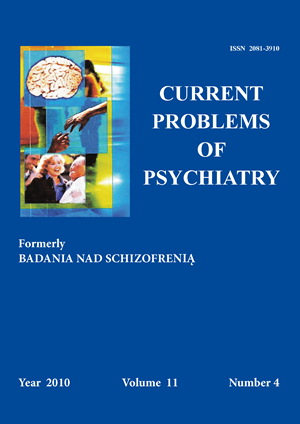Technologia WiDi w życiu rodziny
Słowa kluczowe:
technologia WiDi, telewizja, Internet, rodzinaAbstrakt
Kanały komunikacyjne stanowią podstawową przyczynę kulturowej zmiany, nowej jakości w dziedzinie sto-sunków międzyludzkich i aktywności społecznej. Każda innowacja w przestrzeni komunikacyjnej, zgodnie z teorią determinizmu technologicznego Marshalla McLuhana, zmienia styl życia jednostki i wspólnoty, w tym rodziny. Przełom XX i XXI wieku to swego rywalizacja pomiędzy mediami tradycyjnymi (wśród nich telewizja) a mediami nowymi (Internet i telefon komórkowy). Pojawiają się rozwiązanie technologiczne, które próbują łączyć te media, a jednocześnie w nowy sposób oddziaływać na kulturę i styl życia człowieka i rodziny. Tym rozwiązaniem technolo-gicznym jest Wireless Display (WiDi).
Bibliografia
1. http://www.heise-online.pl/newsticker/news/item/Techno logia-Wireless-Display-wkracza-do-Europy-980616.html (read 28 November 2010r.).
2. Research carried out by Pew Centre‟s Internet and American Life can be found on www.pewinternet.org
3. Cwalina W. Generacja Y – ponury mit czy obiecująca rzeczywistość. in: T. Zasępa (ed.), Internet. Fenomen społeczeństwa informacyjnego. St Pauls Edition; Częstochowa: 2001, p. 33.
4. Strasburger V.C., Wilson B.J., Jordan A.B. Children, Adolescents and the Media. Los Angeles; SAGE Publications: 2009, p. 6-8.
5. Pew Internet & American Life Project Networked Family Survey, http://www.pewinternet.org/pdfs/PIP_Networked_Fa mily.pdf
6. Towards a safer use of the internet for children in the EU – a parents‟ perspective. Conducted by The Gallup Organization, Hungary upon the request of Directorate General Information Society and Media, Flash EB Series #248. 2008. Eurobarometer research at the request of The European Commission since 1973. Methodology is the same every edition: in every member state of EU individual interviews are carried out (face-to-face) on a representative group of 1000 adults chosen at random. Report published on the website: http://ec.europa.eu/information_society/activities/sip/eu robarometer/index_en.htm
7. Flew T. New media. Oxford University Press; Oxford: 2008, p. 96-98.
8. Jęczeń J. Nowe technologie – nowa komunikacja w rodzinie. Roczniki Teologiczne, 2009; LVI(10): 121-137.
9. Strasburger V.C., Wilson B.J., Jordan A.B. Children, Adolescents and the Media. p. 6-7, 108, 501.
10. SAFT research (Safty Awerness Facts Tools) authors T. Bjørnstad, T. Ellingsen, E. Staksrud, research carried out in 2002–2004 in five EU countries: Norway, Sweden, Denmark, Island and Ireland. Te two groups of respoendedns were surveyed – children age 6 – 16 using the Internet (N=4754 people) and parents of the children age 6 – 16 who have the Internet access (N=3213) The survey used quantitative methods (telephone questionnaire – parents, auditoria questionnaire – children) and qualitative methods (individual interviews – parents / children, group interviews – children and observations – children) Detailed description of methodology can be found on SAFT website: www.saft.online.org
11. The Use of New Media by Children, A research report for the Internet Advisory Board (2004), Amárach Consulting, http://www.iab.ie/Publications/Research/d63.PDF.
12. Harris L. & Associates. Sexual material on American network television during the 1987-88 season. Planned Parenthood Federation of America; New York: 1988.
13. Eveland W.P., Detenber A.I., Nathanson A.I., McLeod D.M. Tethinking the social distance corollary: Perceived likelihood of exposure and the third-person perception. Communication Research, 1999; 26: 275-302.
14. Gentile D.A., Walsh D.A. A normative study of family media habits. Journal of Applied Development Psychology, 2002; (23): 157-178.
15. Rideout V.J., Hamel E. Zero to six; Electronic media in the lives of infants, toddlers, and preschoolers. Menlo Park, CA; Kaiser Family Foundation: 2006.
16. Buchamn D. D., Funk J. B. Video and computer games in the „90s: Children‟s time commitment and game preference. Children today, 1996; (24): 12-15. 31.
17. Pratchett R. Games in the UK: Digital play, digital life-style. London; BBC. Retrieved July 26, 2006; http://open.bbc.co.uk/newmediaresearch/files/BBC_UK_Games_Research_2005.pdf
18. Livingston S. Bober‟s M. resserach were conducted in the span of UK Children Go Online project, between April 2003 and April 2005, test sample 1511 age 9 – 19 and 906 parents of the childrem of 9 – 17. In the survey qualitative methods were used (computer assisted per-sonal interviewing – CAPI) and qualitative methods (observations and group and individual interviews). Description of methodology and the results can be found on the website: www.children-go-online.net.
19. Jęczeń J. Rodzina i bezpieczny Internet. in: Gorbaniuk J., Parysiewicz B. (ed.), Rodzina wobec współczesnych wyzwań społeczno-kulturowych. KUL Publishing House; Lublin: 2009, p. 66-71.
20. Jęczeń J. Cyber-exploitation in Family Life. Curr. Probl. Psychiatry 2010; 11(3): 219-223.
21. Willard N.E. Cyberbullying and cyberthreats: responding to the challenge of online social aggression, threats, and distress. USA: 2007, p. 5-14.
22. Jęczeń J. Family and the Safe Internet. p. 72-73.
23. Jęczeń J. Wspólnototwórcza rola środków społecznego przekazu w rodzinie. in: Tomkiewicz A., Wieczorek W. (ed.), Rodzina jako Kościół domowy. Lublin; KUL Publishing House: 2010, p. 613-624.
24. John Paul II. Orędzie na XXIII Światowy Dzień Środków Społecznego Przekazu pt. „Religia w środkach przekazu”. Vatican: 1989.
25. Drożdż M. Osoba i media. Personalistyczny paradygmat etyki mediów. Biblos; Tarnów: 2005, p. 221-265.
26. Jęczeń J. Mass media w służbie caritas. Refleksja na kanwie encykliki Benedykta XVI Deus caritas est. Rocz. Teolog., 2007; LIV(10): 192.


